How to play the major scale on guitar
Beginner guitar: This scale is the foundation for basically everything, so it's essential learning for all aspiring players
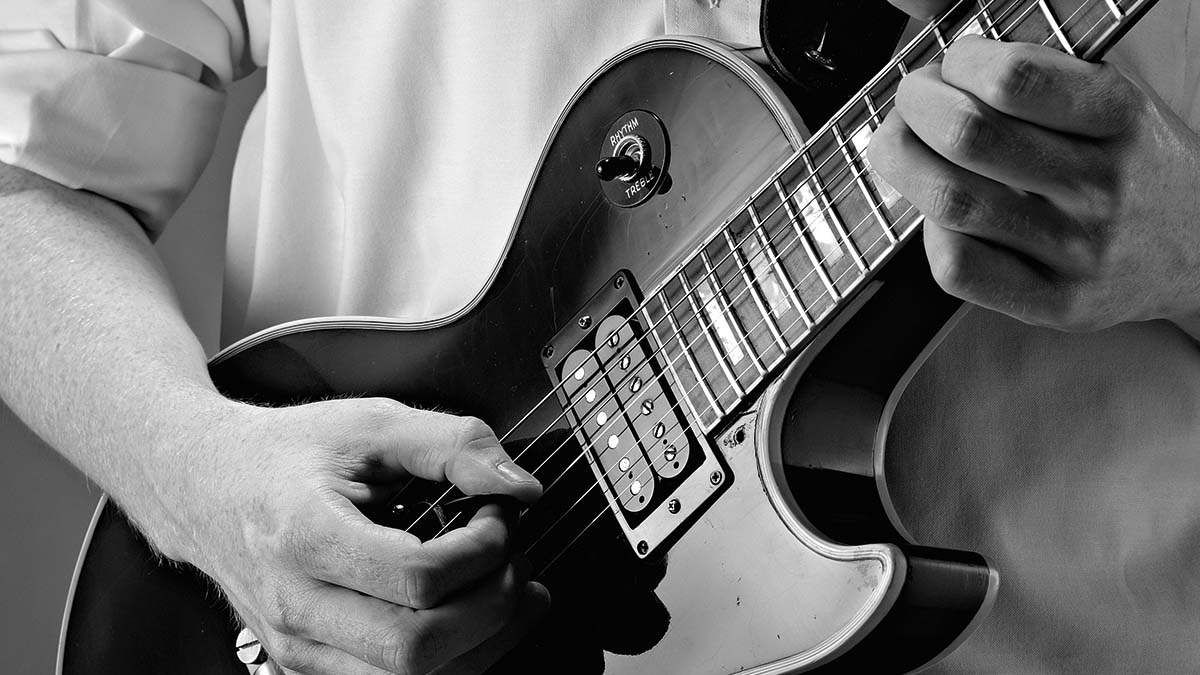
Beginner guitar: The major scale is the basis for most Western tonal music. There are other scales, but we understand them by how they relate to the major scale. Luckily, it’s familiar because you’ve been hearing it since before you were born. Most nursery rhymes use the major scale, and it’s been used by every composer and songwriter from Liszt to Lizzo.
The first step in learning how to play the major scale on guitar is to get your fingers around it. We’ll use a shape with a four-fret stretch on several strings. That might take some getting used to, but it’s mostly down to getting your hand in the right position.
You want to know this scale inside out – it’s going to serve as a framework for technical exercises and improvisation from now on. Your fingers need to know where they’re going so your brain is free to think about music.
Once you know the scale, let’s dive into improvising with it. We’ve written one example of the kind of thing you can do, but be brave and start experimenting. There are no negative consequences to making bad sounds in the privacy of your own home! If you play something that sucks, you’ve learned something.
Major scale shape
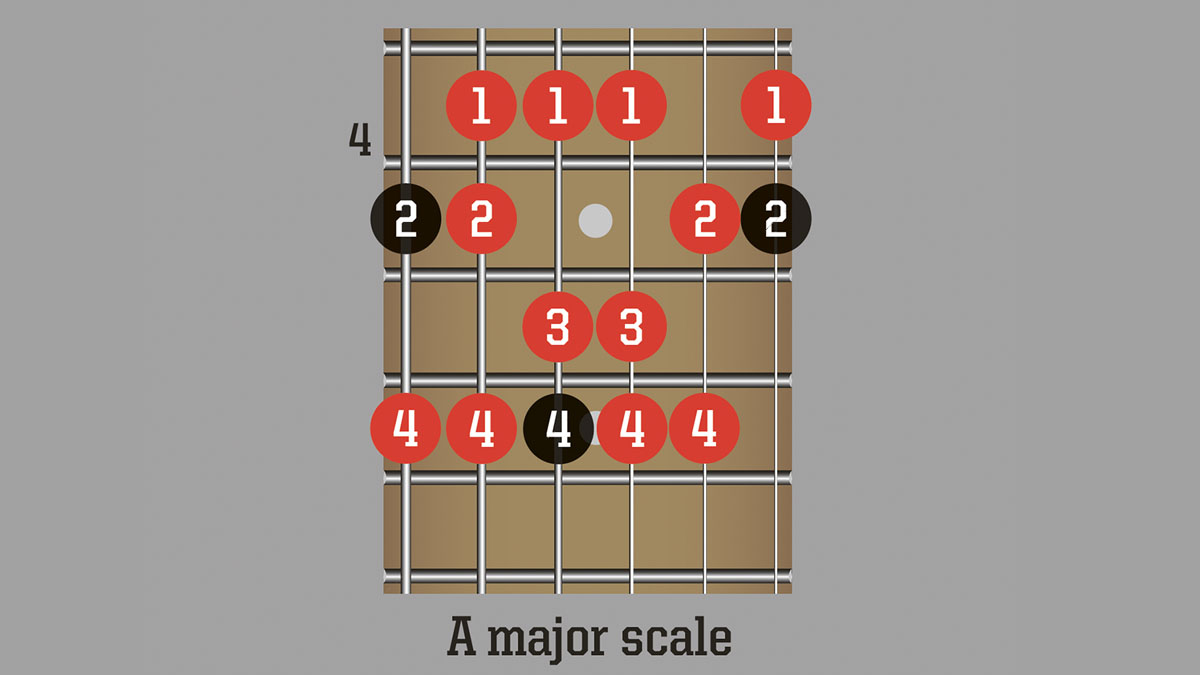
Play through these notes from low to high and you’ll soon be ready to tackle our tab examples.
Technique check
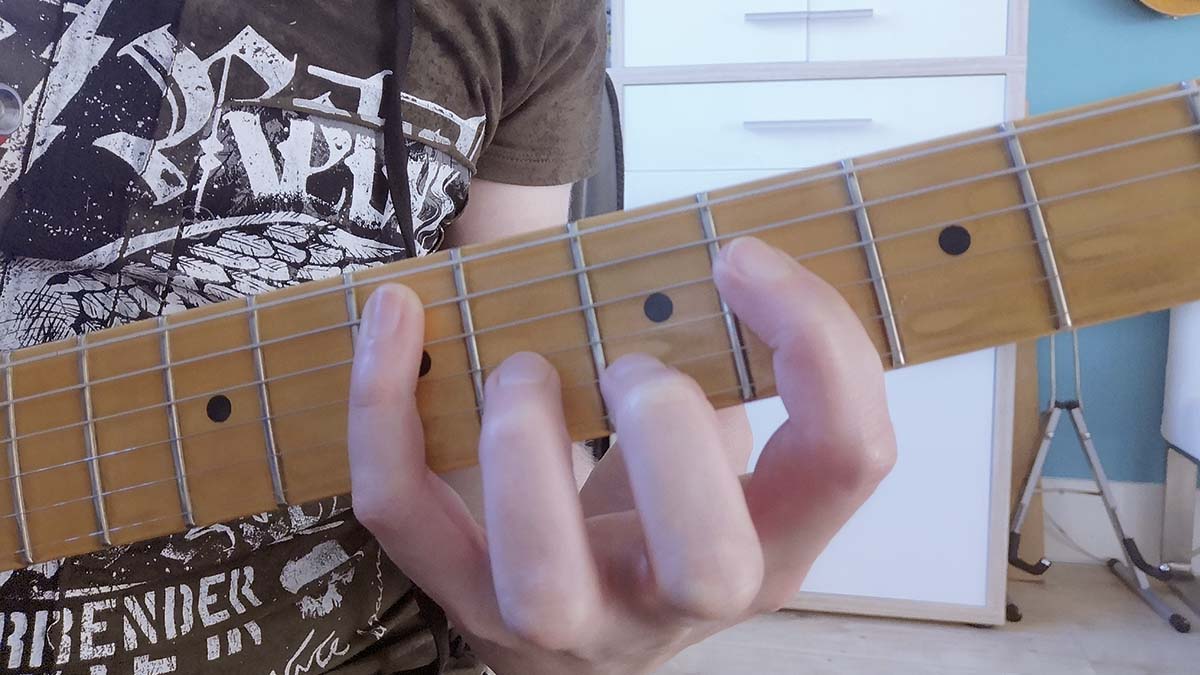
1. CROSSING STRING TECHNIQUE
When crossing strings you need to have your first finger on the 4th fret and your fourth finger on the 7th fret at the same time so that the notes flow smoothly.
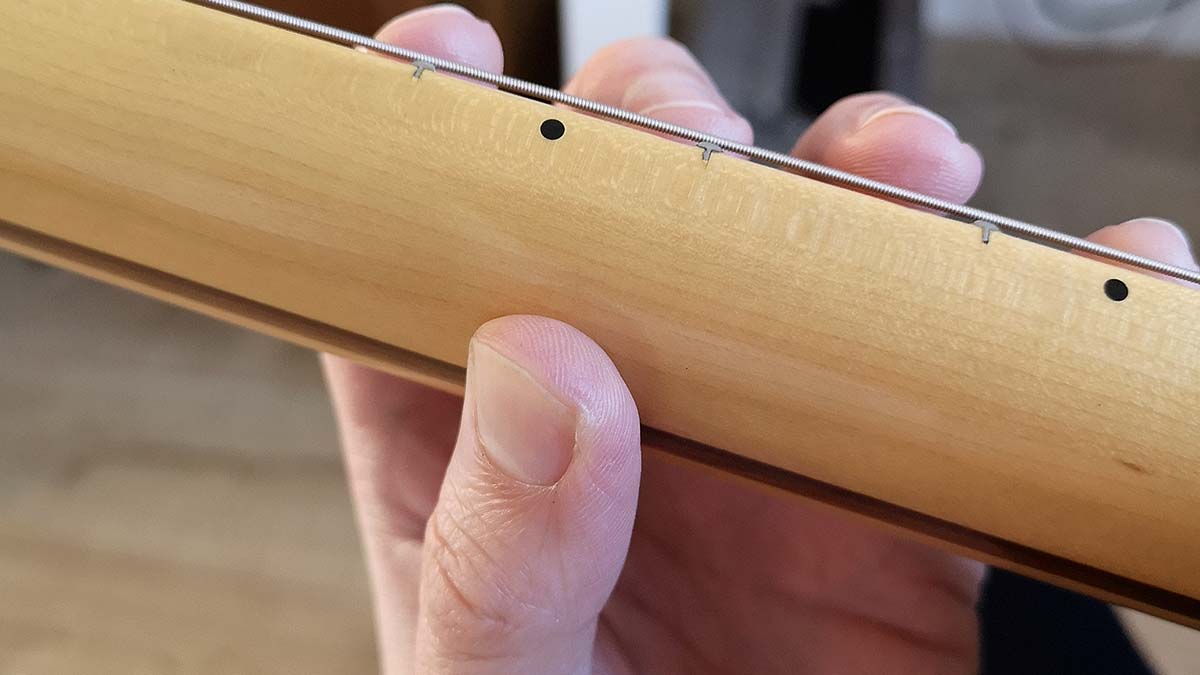
2. THUMB POSITION
Wide stretches are much easier with your thumb positioned vertically near the centre of the neck, roughly opposite your first or second finger.
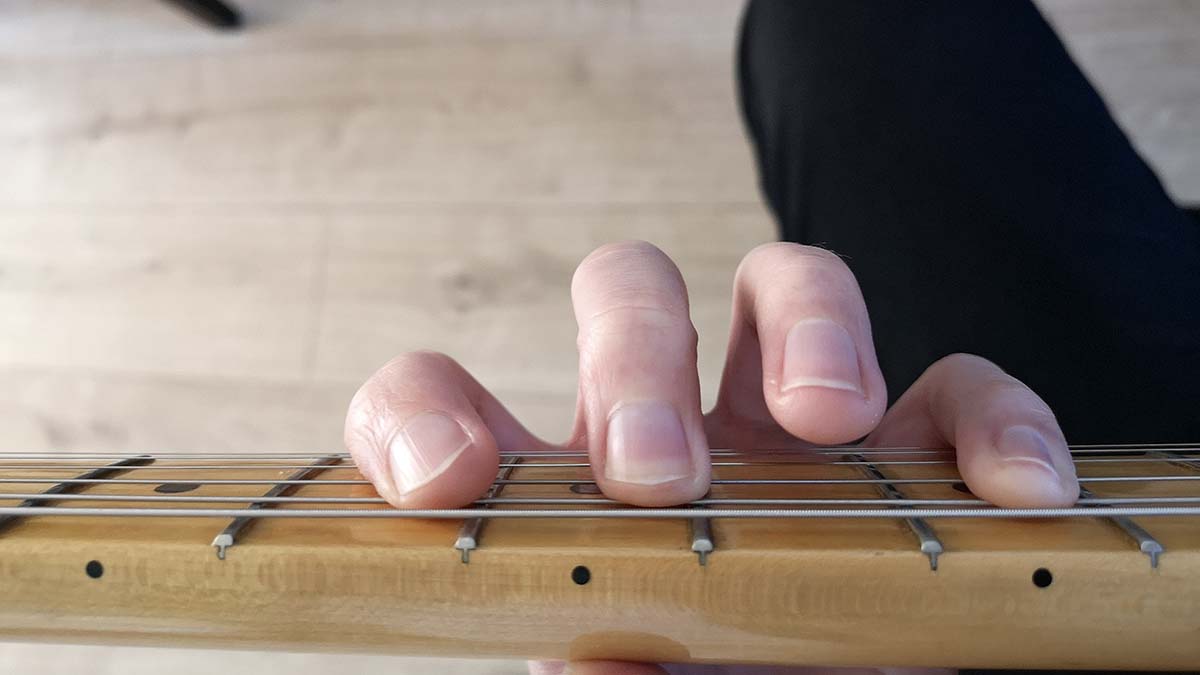
3. GOOD HAND POSITION
For maximum stretch, your fingers should approach the strings as close to 90° as your body mechanics allow.
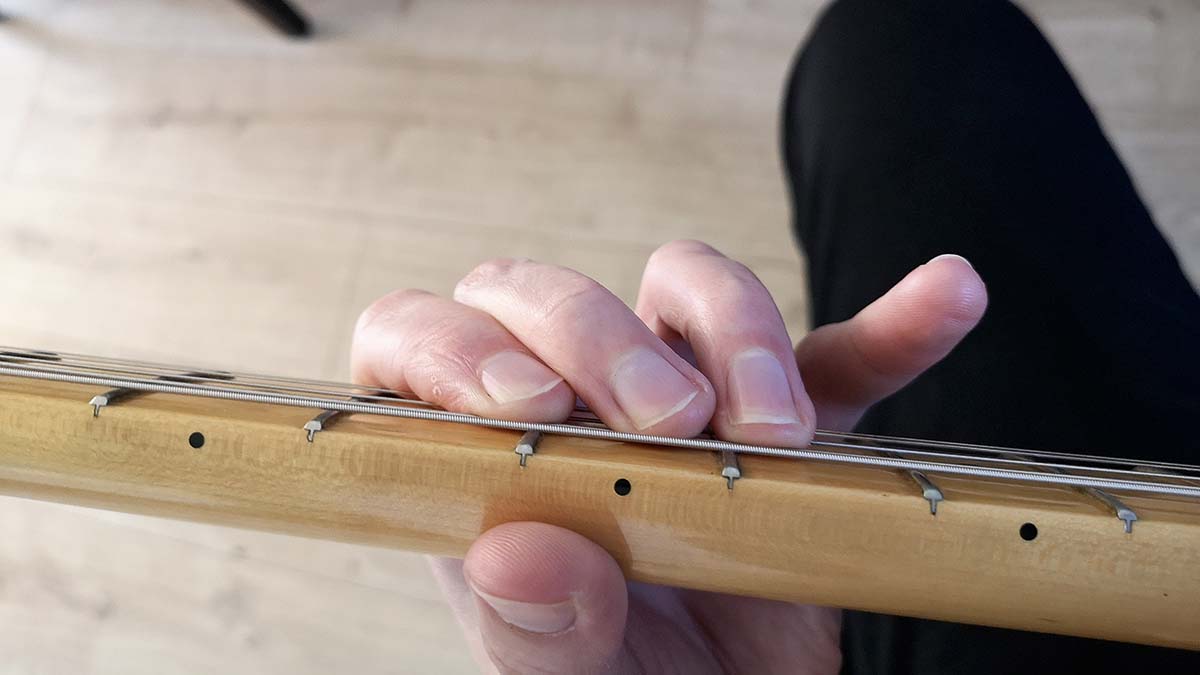
4. BAD HAND POSITION
If your fingers approach the strings at an angle, stretching is nearly impossible and you’ll fluff the notes.
Example 1. Major Scale with Rhythm

Hopefully you’ve already played through the scale shape shown on the previous page, so now try this line, or even invent your own. It’s the same notes, just a different rhythm. This way you’ll improve your sense of rhythm and scale knowledge at the same time.
Example 2. Rock Lick

This lick uses only notes from the A major scale. There are no big stretches, so you can use a different finger/hand position to make the bends easier if you need to.
Get The Pick Newsletter
All the latest guitar news, interviews, lessons, reviews, deals and more, direct to your inbox!
Total Guitar is one of Europe's biggest guitar magazines. With lessons to suit players of all levels, TG's world-class tuition is friendly, accessible and jargon-free, whether you want to brush up on your technique or improve your music theory knowledge. We also talk to the biggest names in the world of guitar – from interviews with all-time greats like Brian May and Eddie Van Halen to our behind the scenes Rig Tour features, we get you up close with the guitarists that matter to you.








![Joe Bonamassa [left] wears a deep blue suit and polka-dotted shirt and plays his green refin Strat; the late Irish blues legend Rory Gallagher [right] screams and inflicts some punishment on his heavily worn number one Stratocaster.](https://cdn.mos.cms.futurecdn.net/cw28h7UBcTVfTLs7p7eiLe.jpg)


